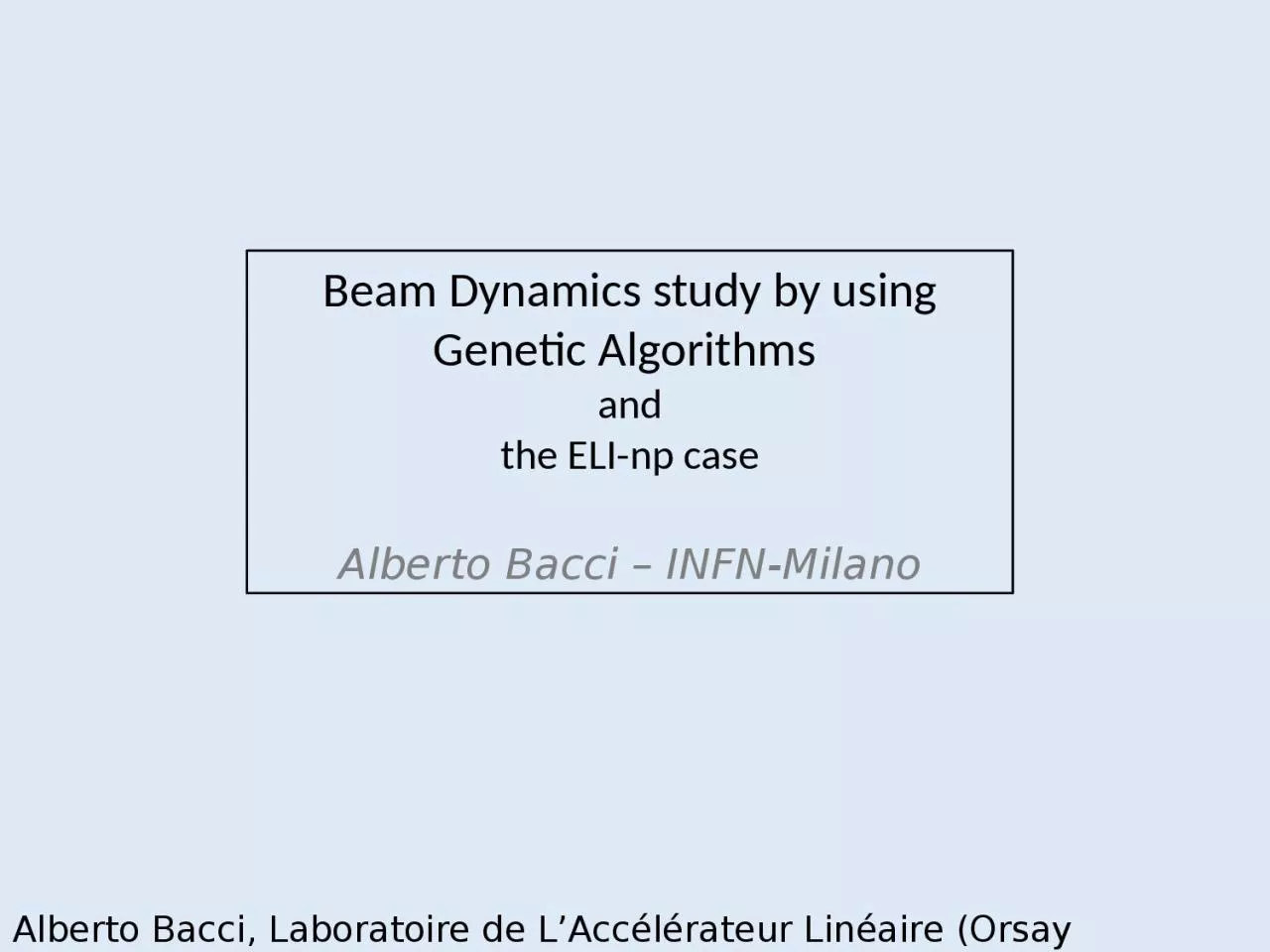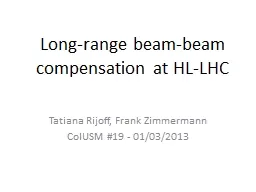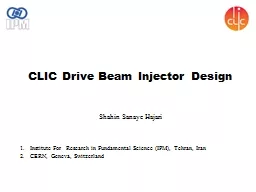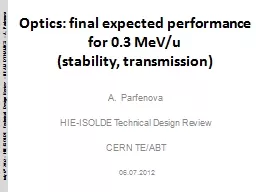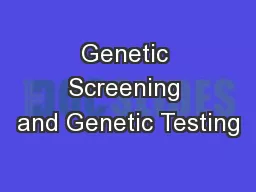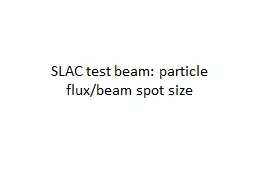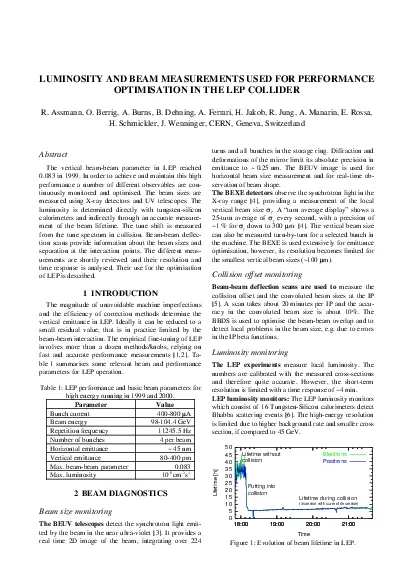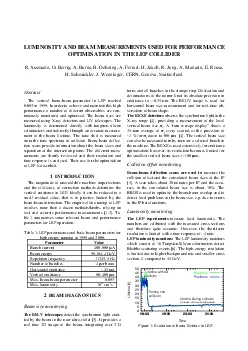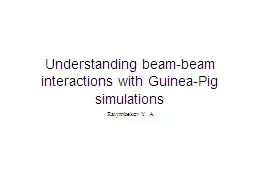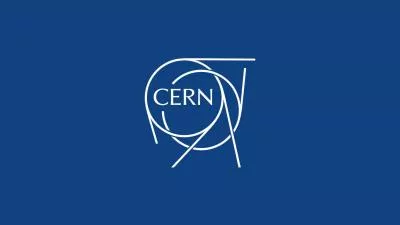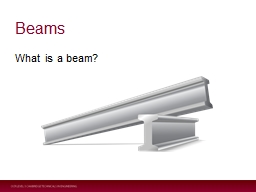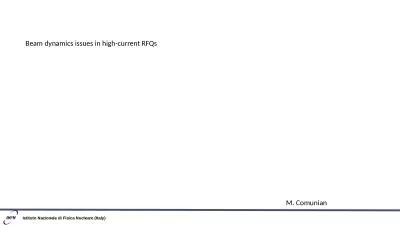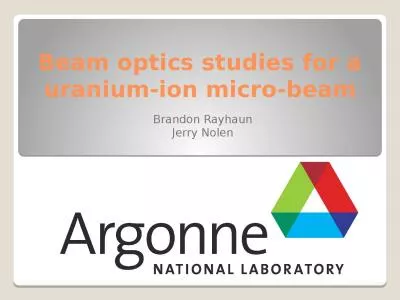PPT-Beam Dynamics study by using Genetic
Author : gabriella | Published Date : 2024-01-03
Algorithms and t he ELI np case Alberto Bacci INFNMilano Alberto Bacci Laboratoire de LAccélérateur Linéaire Orsay France 13th June G enetic A lgorithm
Presentation Embed Code
Download Presentation
Download Presentation The PPT/PDF document "Beam Dynamics study by using Genetic" is the property of its rightful owner. Permission is granted to download and print the materials on this website for personal, non-commercial use only, and to display it on your personal computer provided you do not modify the materials and that you retain all copyright notices contained in the materials. By downloading content from our website, you accept the terms of this agreement.
Beam Dynamics study by using Genetic: Transcript
Download Rules Of Document
"Beam Dynamics study by using Genetic"The content belongs to its owner. You may download and print it for personal use, without modification, and keep all copyright notices. By downloading, you agree to these terms.
Related Documents

